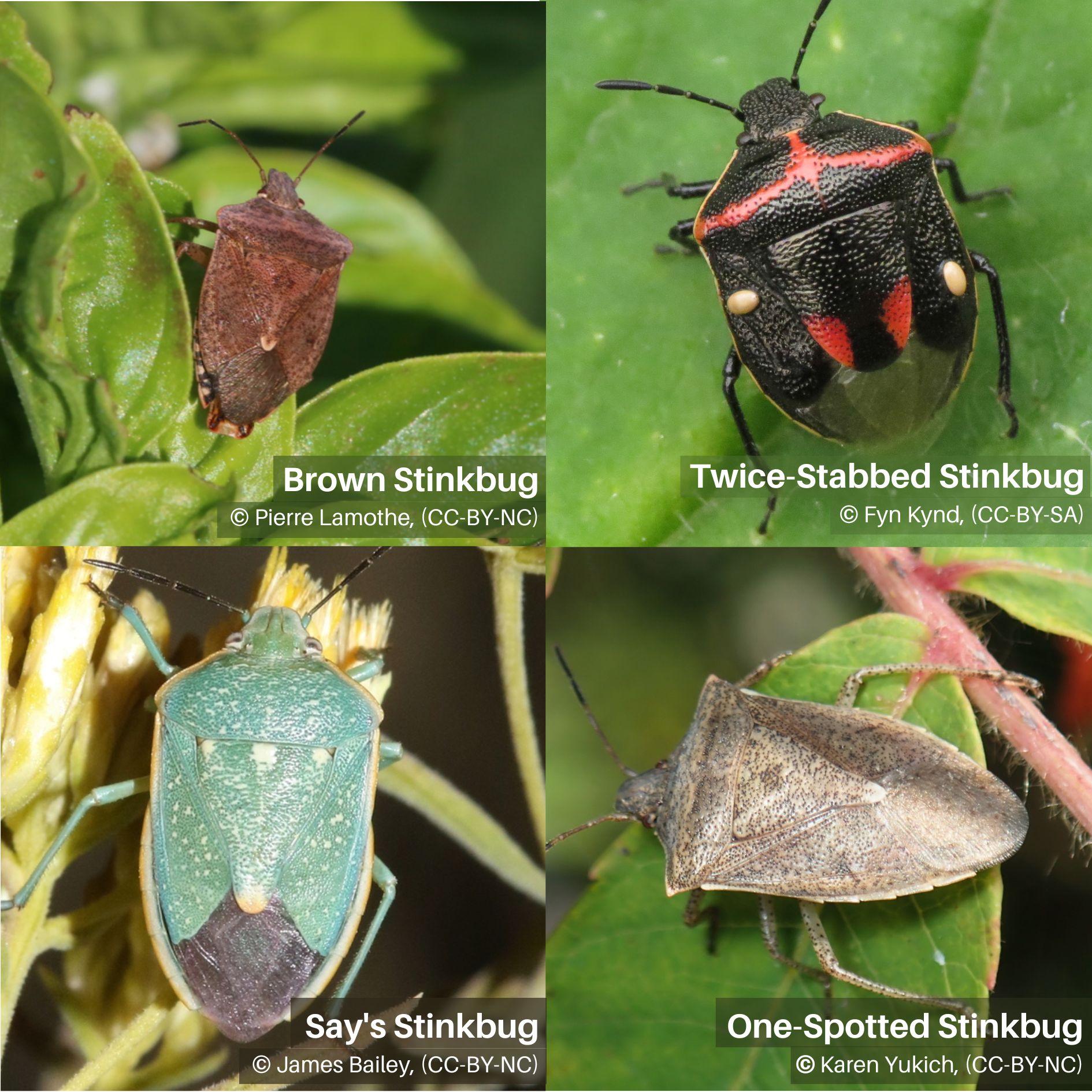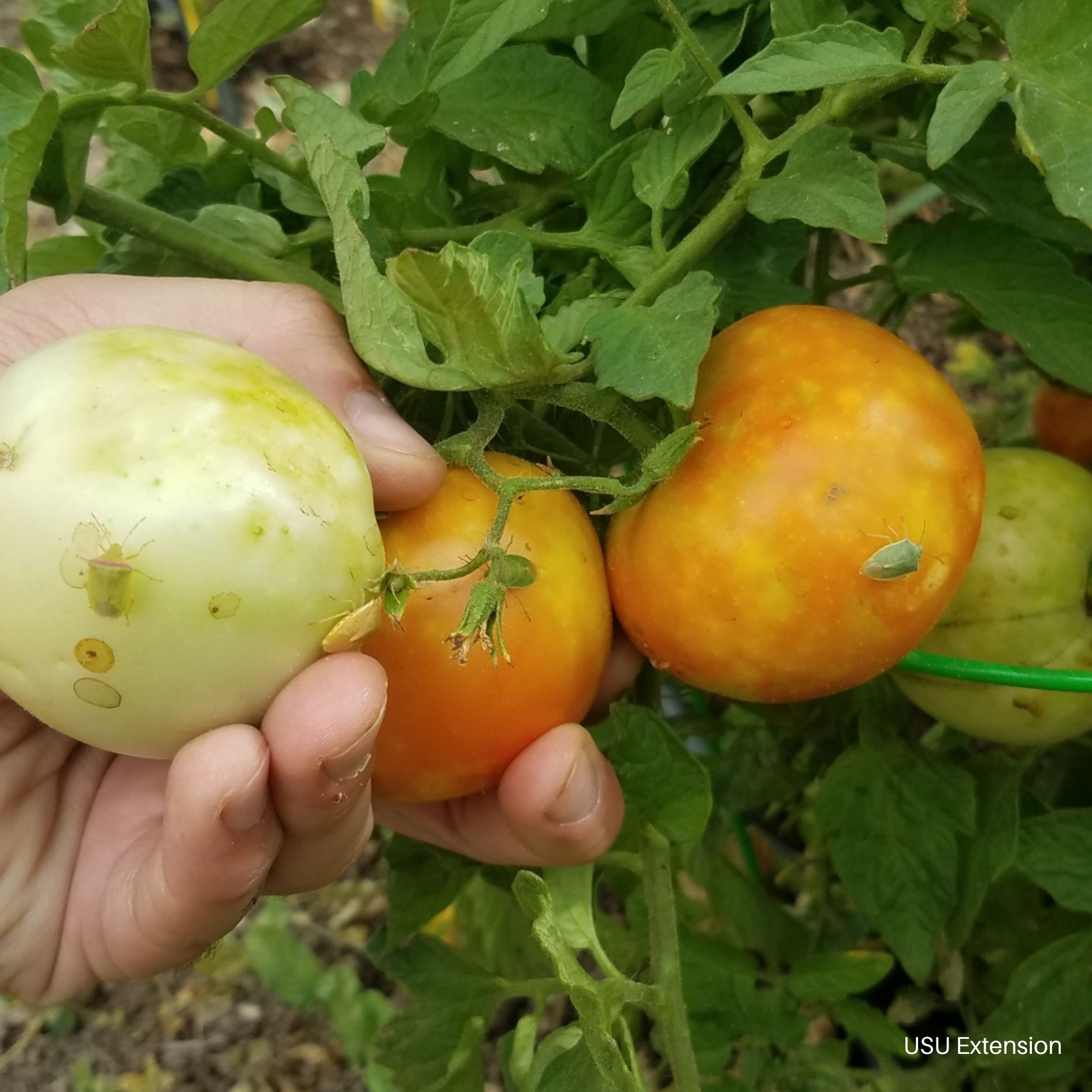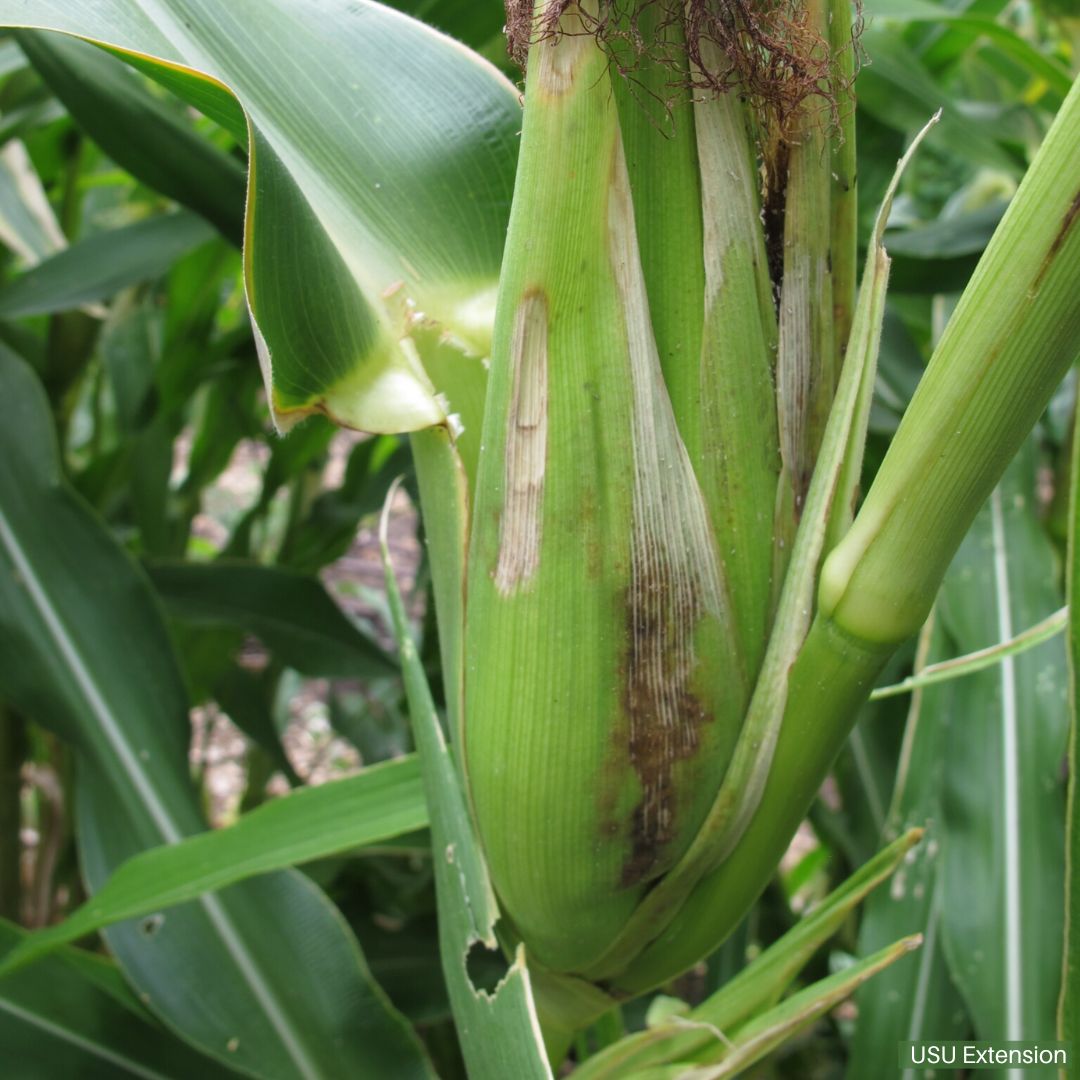Stink Bugs on Vegetables
HOSTS
- Corn
- Cucurbits
- Legumes
- Solanaceae
- Hemp
OVERVIEW
Stinkbugs are true bugs that feed with piercing-sucking mouthparts, causing damage to fruiting parts of plants. Stinkbug feeding distorts fruit growth and decreases overall fruit quality. They are prevelent throughout the growing season.
Stinkbug species found in Utah, include the following:
- Brown marmorated stink bug (BMSB) (Halyomorpha halys)
- Brown stink bug (Euschistus servus)
- Conchuela stink bug (Chlorochroa ligata)
- Consperse stink bug (Euschistus conspersus)
- Green stink bug (Acrosternum hilare)
- Red shouldered stink bug (Thyanta custator)
- Southern green stink bug (Nezara viridula)
- Twice-stabbed stink bug (Cosmopepla lintneriana)
- One-spotted stink bug (Euschistus variolarius)
- Say’s stink bug (Chlorochroa sayi)
- Uhler stink bug (Chlorochroa uhleri)
DESCRIPTION
Adults are shield-shaped bugs. Nymphs are wingless, with a more rounded form than adults. Eggs are barrel-shaped and laid in clusters of 10-30 on host leaves. Different species will have different appearances.BIOLOGY
Egg | Nymph | Adult
Stink bugs can have 2-3 overlapping generations in a year. They overwinter as adults under leaves, plant debris, weedy areas, and other protected sites such as buildings or structures, wood piles, or dead trees. They're typically a concern from July through harvest. The damage is greatest during warm, dry periods.
SYMPTOMS
Nymphs and adults feed with piercing-sucking mouthparts primarily causing damage to fruiting parts of plants. Damage initially occurs as hard, whitish, callous areas surrounding a central feeding puncture, later developing into cloudy areas of hard yellow spots. Fruit begins to grow in a distorted manner, with indented areas developing at the feeding sites (cat-facing). Young fruit may abort from stink bug damage and seeds of legumes may be killed or shrunken after pod feeding. Green fruit damage occurs as dark pinpricks surrounded by a light colored area. Damage may cause poorly developed flavor of fruits and vegetables.
SCOUTING
- Infestations typically occur along field edges.
- Look for eggs on host plants along field edges starting in late spring and throughout the season.
- Shake foliage over a beating sheet/ tray and count fallen nymphs and adults.
- Monitor for BMSB with Pherocon® BMSB and GSB lures on a Pherocon® STKY™ dual panel clear sticky trap.
- Watch for feeding injury on fruit and vegetables.
GENERAL MANAGEMENT
Small numbers of stink bugs can cause serious damage to fruits and vegetables. Stink bugs can be difficult to kill with insecticides due to their strong flight capability and tolerance to insecticide residues. Brown, consperse, and one-spotted stink bugs are only minor pests of fruits and buds. BMSB is a new invasive pest in Utah; it has the potential to cause severe crop damage.
- Hand-pick stinkbugs from plants. They can be squashed or drowned in a bucket of soapy water.
- Remove weeds that can serve as alternative hosts.
- Plant trap crop barriers around border of cash crop.
- Row covers or fine-mesh netting over plants in gardens and small acreage crops.
- Attract and conserve natural enemies.
- Application of insecticides are often necessary
INSECTICIDES
When to consider treatment:
- For consperse and green stink bugs, when stink bug counts average one in three shake samples. Time treatments in tomatoes to start when fruits reach 1 inch in diameter.
- For BMSB, action thresholds have not yet been developed.





